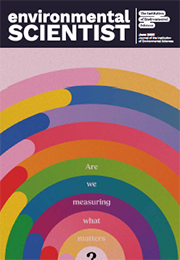This issue explores how, and why, specific environmental indicators are chosen to communicate environmental tipping points, baselines and benchmarks – alongside examining the politics, philosophies, and science that underpin them.
Articles in ‘Are we measuring what matters?’ examine a wide range of contemporary indicators from different perspectives across the environmental sector. Case studies demonstrate how indicators can help bridge difficult communication challenges – such as engaging both policymakers and the public with environmental problems – and other articles consider the complexities inherent in attempting to quantify or measure more abstract concepts, such as the wellbeing and value derived from experiencing beauty in our environment.
This issue of environmental SCIENTIST takes an interdisciplinary approach, bringing together scientists, policymakers, and public servants to ask how we measure both environmental degradation and improvement, and whether these methods are doing the work that is necessary to help us reach global environmental targets in the future.




